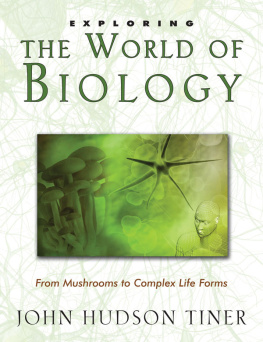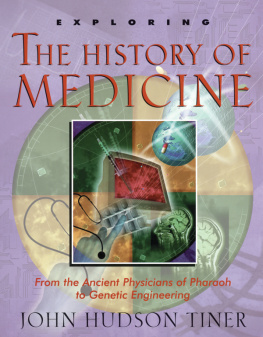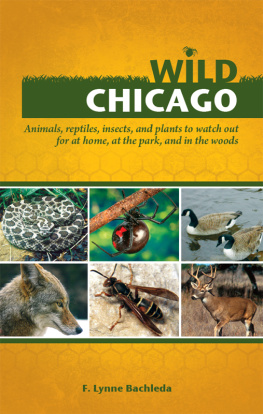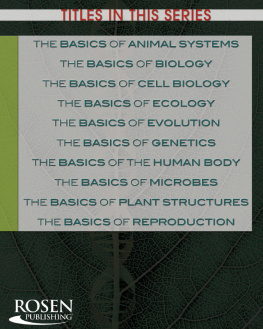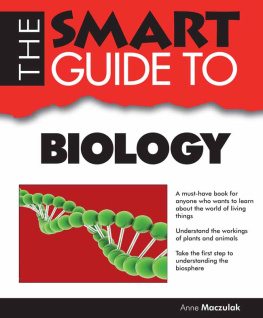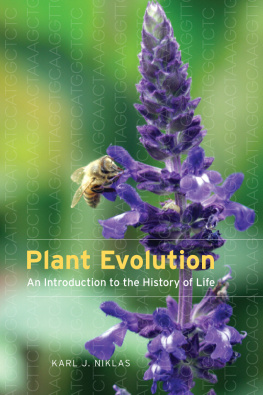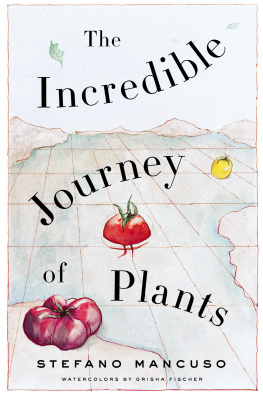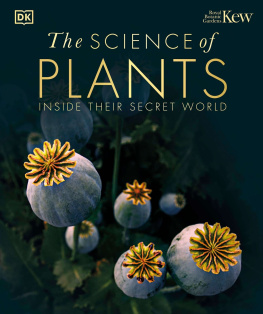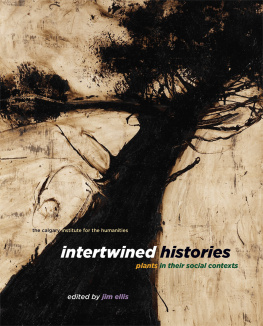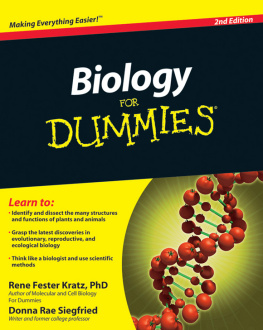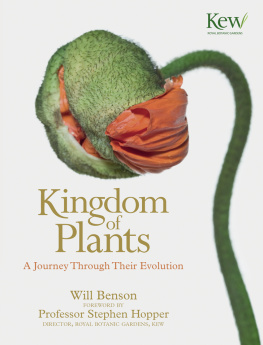
Exploring The World of Biology
First printing: November 2008
Second Printing: June 2011
Copyright 2008 by John Hudson Tiner. All rights reserved. No part of this book may be used or reproduced in any manner whatsoever without written permission of the publisher except in the case of brief quotations in articles and reviews. For information write:
Master Books , P.O. Box 726, Green Forest, AR 72638.
Master Books is a division of the New Leaf Publishing Group, Inc.
ISBN-13: 978-0-89051-552-5
Library of Congress Catalog Number: 2008940597
Interior Design and Layout: Bryan Miller
Cover Design: Diana Bogardus and Terry White
All Scripture is from the New International Version of the Bible, unless otherwise noted.
Please consider requesting that a copy of this volume be purchased by your local library system.
Printed in the United States of America
Please visit our Web site for other great titles:
www.masterbooks.net
For information regarding author interviews, please contact the publicity department at (870) 438-5288.
This book is dedicated to Megan Elizabeth Stephens.
Photo Credits
Shutterstock: 6, 8, 19, 22, 24, 26, 28, 29, 30, 32, 34, 35, 37, 38, 39, 40, 45, 46, 47, 48, 50, 51, 55, 56, 64, 66, 71, 74, 75, 78, 79, 80, 83, 87, 88, 89, 91, 92, 93, 94, 96, 97, 100, 101, 103, 105, 106, 107, 116, 118, 120, 121, 122, 123, 124, 125, 126, 127, 131, 133, 134, 136, 144, 145, 146, 146, 147, 148
I-Stock: 6, 10, 11, 19, 34, 40, 42, 43, 44, 47, 53, 57, 94, 96, 104, 107, 121, 128, 129, 130, 132
Bryan Miller: 8, 20, 23, 25, 34, 43, 59, 61, 62, 65, 68, 75, 77, 86, 102, 117, 138, 139
Science Photo Library: 10, 52
Wikipedia: 17, 114
National: 70
Nasa: 58

Table of Contents
Note to Parents and Teachers: How to Use Exploring the World of Biology
Students of several different ages and skill levels can use Exploring the World of Biology . Children in elementary grades can grasp many of the concepts, especially if given parental help. Middle school students can enjoy the book independently and quickly test their understanding and comprehension by the challenge of answering questions at the end of each chapter. Junior high and high school students can revisit the book as a refresher course.
In addition, sections marked Explore More can be a springboard for additional study. Explore More offers questions, discussion ideas, and research for students to develop a greater understanding of biology.
Biological Classification and Nomenclature
For most of history, biologists used the visible appearance of plants or animals to classify them. They grouped plants or animals with similar-looking features in the same family. Starting in the 1990s, biologists have extracted DNA and RNA from cells as a guide to how plants or animals should be grouped. Like visual structures, DNA (deoxyribonucleic acid) and RNA (ribonucleic acid) reveal the underlying design of creation. Because of the recent switch to DNA and RNA, biological classification is the subject of ongoing debate and proposed changes. Classification is in a state of flux and will remain so for many years. The discussion in this book follows the most settled form of classification, the five-kingdom system, proposed in 1968, which has become a popular standard and is still used by many biologists. The nomenclature uses the English equivalent of Latin terms whenever they are similar.
Chapter 1 - The Hidden Kingdom
Explore
- What were the first two categories of living things?
- Why were mushrooms difficult to classify as plants?
- What classification did scientists give to mushrooms?
Classification is the process of grouping objects based on their similarities. For most of history, biologists organized the living world into two kingdoms of plants and animals. Grouping living things into either plant kingdom or the animal kingdom made their work easier. Biologists could easily grasp the broad design of living organisms.
Biologists put into the plant kingdom life that can make food from nonliving material. Chlorophyll (KLOR-uh-fil) is a chemical that gives plants their green color. Plants use chlorophyll and the energy of sunlight to combine water and carbon dioxide to make simple sugars. The process is called photosynthesis (foh-toh-SIN-thuh-siss). Plants use the sugar for growth and to supply energy for building other chemicals, such as cellulose, which makes their cell walls.
Biologists put into the animal kingdom forms of life that have sense organs to detect what is around them. Most animals can see and hear. They have a nervous system to interpret what they sense and react to the presence of food or danger. They can move about. Animals cannot make food directly from nonliving minerals. Instead, they must eat plants or other animals.
Biological classification is a system developed by biologists based on their studies and opinions. Once an idea has been accepted for a long time, scientists are reluctant to make changes. From the time of the ancient Greeks about 400 B.C. the entire living world was considered made of either plants or animals. But some forms of life, such as mushrooms, did not easily fall into either category.

A variety of woodland mushrooms
Although mushrooms looked like plants in some ways, they differ from plants in other ways. The greatest difference was that mushrooms did not have chlorophyll. Mushrooms did not need light. They could live quite well in dark caves, provided they had a source of dead plant or animal matter.
To preserve the two-kingdom classification system, most biologists stubbornly kept mushrooms in the plant kingdom. They insisted upon describing mushrooms as plants without chlorophyll.
The word mushroom comes from a French word meaning moss or foam. It is a good choice, because mushrooms are light and airy. Since ancient times, mushrooms have been added to foods to give them a distinctive texture or pleasing taste.
However, scientists did not study mushrooms in detail until the 1700s. They knew that plants had cell walls made of strong cellulose. This gave the cell strength and allowed plants, such as trees, to grow tall despite their immense weight. But study showed mushrooms did not have cellulose.
Biologists discovered that mushroom cell walls were more like those of animals than plants. In addition, mushrooms, like animals, absorbed nutrients from other plants and animals. But biologists could not group mushrooms with animals. Mushrooms had no sense organs, no nervous systems, and no way to move about.
Mushrooms were members of a larger group of similar organisms known as fungi (FUHNG-gye). The singular of fungi is fungus (FUHN-guhss). As biologists learned more about mushrooms, they realized that mushrooms and other fungi did not fit well in either the plant or animal kingdoms.
By the 1960s, biologists agreed that fungi needed a kingdom of their own. They created kingdom Fungi. Into the fungi kingdom they put mushrooms, puffballs, yeasts, molds, mildews, and truffles. The word fungi comes from a Greek word meaning sponge. The best-known types of fungi include the yeast that makes bread rise, molds that grow on the surface of fruit and cause it to spoil, and mushrooms.
The stalk and umbrella-shaped cap of a mushroom that we see above ground is only a small part of the entire mushroom. The main body of a mushroom is underground. It is made of a huge network of fine, rootlike threads called hyphae (HIGH-fee). The word hyphae is from a Greek word meaning web. The web, or mat, of hyphae provides food for the mushroom.

